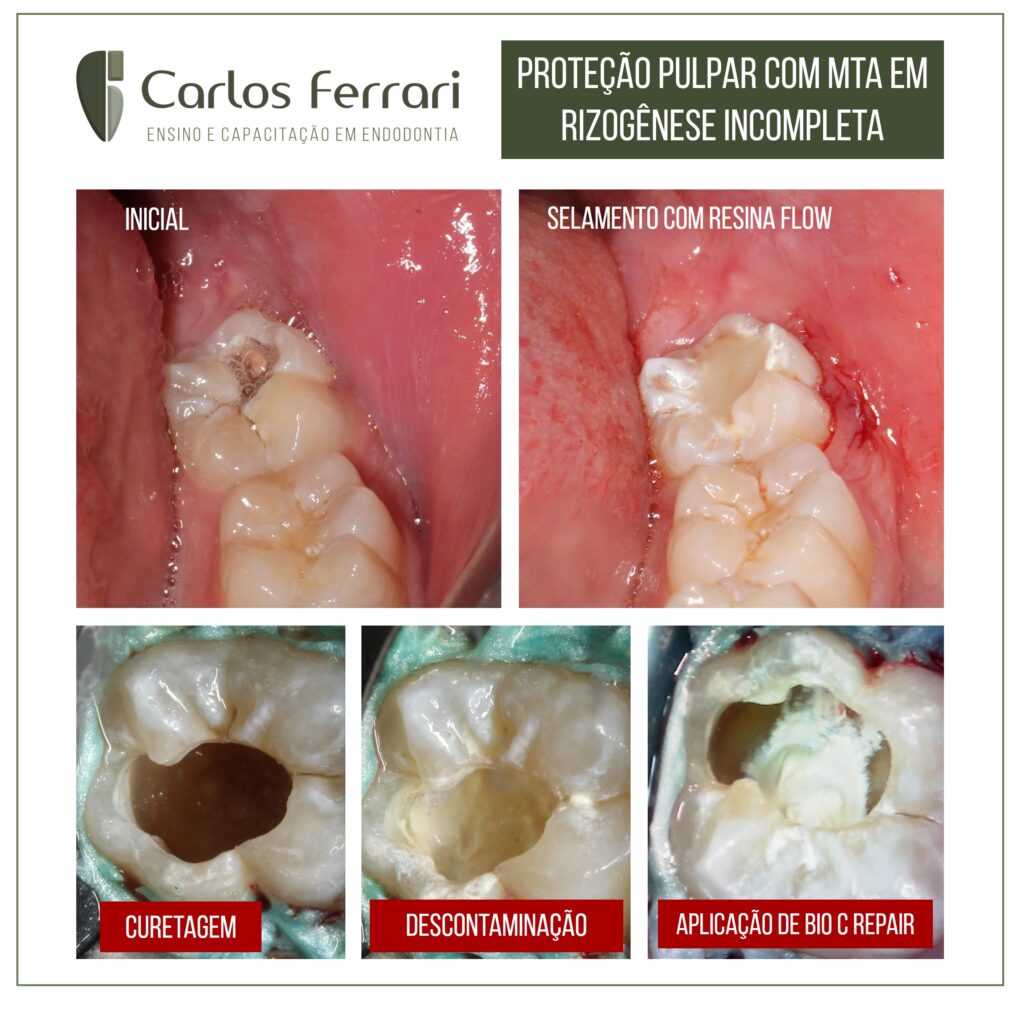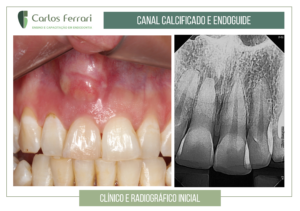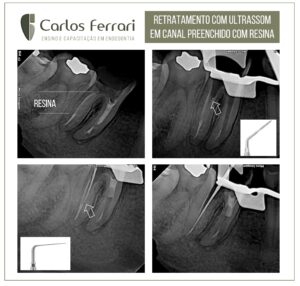Proteção pulpar direta com biocerâmico. Paciente sexo masculino, 15 anos, compareceu ao consultório relatando sintomas típicos de inflamação pulpar reversível na região inferior esquerda, dor ao frio com declínio rápido. No exame clínico, presença de cárie extensa e teste de vitalidade com resposta pouco exacerbada no dente 37. O exame radiográfico mostrou formação radicular incompleta compatível com estágio 9 de Nolla. Optou-se então por tratamento conservador com curetagem da dentina cariada, descontaminação da câmara pulpar com hipoclorito, colocação do cimento Bio C Repair (Angelus) e posterior selamento com adesivo dentinário e resina flow.
A proservação de 20 meses mostra continuação da rizogênese e formação de dentina reparativa.
O paciente foi orientado e será acompanhado clínica e radiograficamente no aguardo do término da formação radicular.

Capeamento pulpar direto com MTA:
As terapias endodônticas em dentes decíduos objetivam a manutenção destes elementos com a finalidade de manutenção do espaço na arcada dentária. Dentre as terapias endodônticas conservadoras, destaca-se a proteção pulpar direta. Este tratamento é um procedimento no qual umapolpa dental exposta é coberta com um medicamento ou material que a protegem de injúrias adicionais, permitindo sua reparação. Tal procedimento é realizado quando ocorre microexposições acidentais da polpa, segundo determinados critérios, como: ausência de sintomatologia dolorosa espontânea, ausência de lesão periapical, idade dentária jovem e rizólise fisiológica inferior a um terço da raiz. Atualmente, a proteção pulpar direta é um procedimento comprovadamente eficaz.
No estudo com dentes de cães, Faraco Jr, Holland demonstraram, por meio de análise histológica, a formação de ponte dentinária em 84,6% dos elementos dentais apósproteção pulpar direta. Neste contexto, o material utilizado em contato com o remanescente pulpar assume relevância,uma vez que é necessário que se mantenha a integridade da polpa radicular. Dentre estes materiais, destacam-se as pastas iodoformadas e de hidróxido de cálcio e o Agregado Trióxido Mineral (MTA).
In: Fidalgo et al. Rev Odontol UNESP, Araraquara, v. 38, n. 6, p. 383-87, nov./dez. 2009
https://www.youtube.com/watch?v=GoV4JybRpi8&list=PLek9BAmgAJf8K1ImjjDiQP9pzj_IGr4fi





